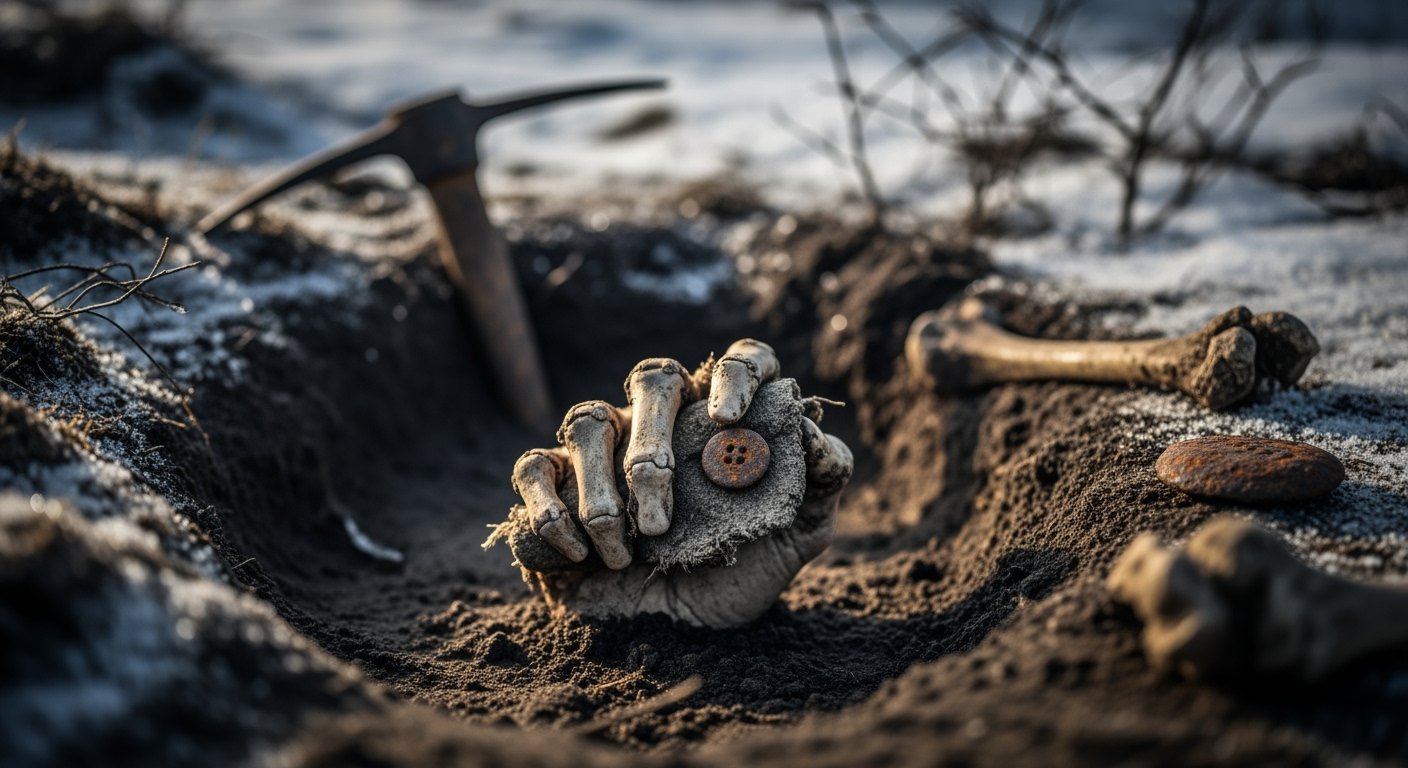Related Articles

Breakthrough Microchip Restores Reading Vision, Offering New Hope for Millions with Sight Loss




Vilnius, Lithuania – Centuries after the calamitous retreat of Napoleon Bonaparte's Grande Armée from Russia, advanced DNA analysis of fallen soldiers is dramatically reshaping our understanding of the invisible enemies that decimated his ranks. Long-held assumptions attributing the bulk of the casualties to typhus are now being challenged by groundbreaking research, which points instead to paratyphoid fever and relapsing fever as previously undetected, major contributors to the historical military disaster. This scientific revelation not only rewrites a pivotal chapter in European history but also underscores the enduring impact of disease on the course of human conflict.
The initial invasion of Russia in June 1812 saw Napoleon lead a formidable multinational force, estimated between 450,000 and 600,000 soldiers, into the vast Russian plains. The campaign, which ended in a devastating retreat by October of the same year, is famously characterized by the ravages of the brutal Russian winter and relentless Russian resistance. However, historical accounts have also frequently highlighted the toll taken by disease. For decades, epidemic typhus, a louse-borne illness, and trench fever were widely considered the primary microbial adversaries, a theory supported by a 2006 study that detected their DNA in soldier remains.
However, new research utilizing sophisticated metagenomics and shotgun sequencing techniques has cast a fresh light on this historical medical mystery. A team of international scientists, examining teeth from 13 different soldiers exhumed from a mass grave in Vilnius, Lithuania, found genetic evidence of two distinct pathogens: Salmonella enterica Paratyphi C, responsible for paratyphoid fever, and Borrelia recurrentis, the bacterium causing relapsing fever. Significantly, the new study found no authenticated DNA for Rickettsia prowazekii (typhus) or Bartonella quintana (trench fever) in these specific samples, a finding that challenges the earlier, targeted PCR-based research. This more comprehensive approach allowed researchers to "cast a wider net" and identify pathogens that might have previously gone undetected.
The newly identified diseases paint a vivid picture of the suffering endured by Napoleon's troops. Paratyphoid fever, spread through contaminated food and water, would have caused symptoms such as fever, abdominal pain, diarrhea or constipation, and debilitating weakness. These conditions would have been rife in a campaign marked by scarce supplies, unsanitary living conditions, and forced marches where clean water and proper nutrition were luxuries. Military doctors of the era, observing symptoms like widespread diarrhea, would have likely struggled to differentiate paratyphoid from other enteric diseases.
Relapsing fever, on the other hand, is transmitted by body lice, a ubiquitous pest in any large military encampment of the period. Soldiers infested with lice would have experienced cycles of high fever, intense muscle pain, and profound exhaustion. The combination of these two diseases, thriving amidst malnutrition, hypothermia, and rampant unsanitary conditions, would have created a deadly synergy, weakening soldiers and making them susceptible to other illnesses and the harsh environmental elements. Historians have long noted that skeletal analyses of the Vilnius remains show little evidence of violent trauma, instead pointing to illness, cold, and starvation as the primary causes of death.
Napoleon's invasion of Russia began with an unprecedented show of force, aiming to compel Tsar Alexander I to adhere to the Continental System, an economic blockade against Britain. The initial advance saw Russian forces employing scorched-earth tactics, retreating deeper into their territory and destroying supplies, leaving Napoleon's army struggling with logistics and foraging. By September, the Grande Armée reached Moscow, only to find it evacuated and engulfed in flames. Faced with an unyielding Tsar and the imminent arrival of winter, Napoleon ordered a desperate retreat in mid-October.
The subsequent march back was catastrophic. Harried by Russian troops, Cossacks, and the elements, the multinational army disintegrated. While "General Winter" and military engagements certainly contributed to the staggering losses, disease acted as a constant, pervasive killer that quietly decimated the army from within. Of the hundreds of thousands who entered Russia, fewer than 30,000 to 120,000 survived the ordeal, a mere fraction of the original force. The new DNA findings reinforce the notion that Napoleon's defeat was not solely a product of strategic missteps or the unforgiving climate, but also the insidious work of microscopic pathogens flourishing in the chaos of war.
The discovery of these "new" hidden killers in Napoleon's army highlights the transformative power of modern paleogenomics. By meticulously analyzing ancient DNA, scientists can peel back layers of historical interpretation, revealing the biological realities that shaped pivotal events. This research not only offers a more nuanced understanding of the 1812 campaign but also provides valuable insights into the history of infectious diseases and their role in human populations, offering lessons that remain relevant in contemporary public health and military contexts.
While the latest study acknowledges that more extensive sampling is needed to fully map the spectrum of diseases that ravaged the Grande Armée, and does not entirely rule out the presence of typhus and other pathogens in the broader population of soldiers, it undeniably adds critical new dimensions to a centuries-old historical debate. The mass graves in Vilnius, discovered in 2001 and containing thousands of remains, continue to serve as a poignant reminder of the human cost of war and a rich repository for unlocking the biological secrets of the past. The silent suffering of Napoleon's soldiers, brought to light through advanced scientific inquiry, underscores that even the most formidable armies can be brought to their knees by unseen biological adversaries.